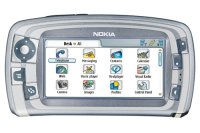 MTV and the Finnish broadcasting company YLE are among the partners in the project.
MTV and the Finnish broadcasting company YLE are among the partners in the project.
The first mobile TV service experiences in Finland happened via a friendly user test carried out in late 2004. The test showed that people liked to watch mobile TV in cars and other means of transport and in public places such as cafes. Watching mobile TV at home and in the workplace was also found to be common. The most usual time was in the mornings and afternoons and early evening.
The test users were found to be interested in news, weather, sports, current issues, entertainment and drama and comedy series. Mobile TV was also considered as a complement to the traditional television. What appealed most to test users was the fact that you can watch mobile TV anywhere you like. According to Nokia, the results showed that most of the test users were prepared to continue using mobile TV services.
The test users were able to view real-time TV and radio programs on a Nokia 7710 smartphone equipped with a special accessory to receive mobile TV broadcasts. The Nokia smartphone also enables direct links to the Internet for access to background information on TV programs or sports results. Test users have access to MTV and YLE programs as well as international channels such as CNN, BBC World, Euronews, Eurosport, ViVa Plus and Fashion TV. The pilot continues until 20 June 2005.
The mobile TV test uses IP Datacasting (IPDC), which conforms with the DVB-H standard. At the end of 2004, the European Telecommunications Standards Institute (ETSI) adopted DVB-H as the standard for European mobile television services, enabling the simultaneous transmission of several television, radio and video channels to mobile devices.
